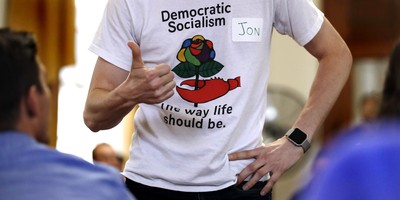Editor’s note: This article is Part III in a series. Click here to read Part I. Click here to read Part II.
Ninety years ago -- in 1921 -- federal income tax policies reached an absurdity that many people today seem to want to repeat. Those who believe in high taxes on "the rich" got their way. The tax rate on people in the top income bracket was 73 percent in 1921. On the other hand, the rich also got their way: They didn't actually pay those taxes.The number of people with taxable incomes of $300,000 a year and up -- equivalent to far more than a million dollars in today's money -- declined from more than a thousand people in 1916 to less than three hundred in 1921. Were the rich all going broke?
It might look that way. More than four-fifths of the total taxable income earned by people making $300,000 a year and up vanished into thin air. So did the tax revenues that the government hoped to collect with high tax rates on the top incomes.
What happened was no mystery to Secretary of the Treasury Andrew Mellon. He pointed out that vast amounts of money that might have been invested in the economy were instead being invested in tax-exempt securities, such as municipal bonds.
Secretary Mellon estimated that the amount of money invested in tax-exempt securities had nearly tripled in a decade. The amount of this money that the tax collector couldn't touch was larger than the federal government's annual budget and nearly half as large as the national debt. Big bucks went into hiding.
Mellon pointed out the absurdity of this situation: "It is incredible that a system of taxation which permits a man with an income of $1,000,000 a year to pay not one cent to the support of his Government should remain unaltered."
One of Mellon's first acts as Secretary of the Treasury was to ask Congress to end tax exemptions for municipal bonds and other securities. But Congress was not about to set off a political firestorm by doing that.
Recommended
Mellon's Plan B was to cut the top income tax rate, in order to lure money out of tax-exempt securities and back into the economy, where increased economic activity would generate more tax revenue for the government. Congress also resisted this, using arguments that are virtually unchanged to this day, that these would just be "tax cuts for the rich."
What makes all this history so relevant today is that the same economic assumptions and political arguments which produced the absurdities of 1921 are still going strong in 2011.
If anything, "the rich" have far more options for putting their money beyond the reach of the tax collectors today than they had back in 1921. In addition to being able to put their money into tax-exempt securities, the rich today can easily send millions -- or billions -- of dollars to foreign countries, with the ease of electronic transfers in a globalized economy.
In other words, the genuinely rich are likely to be the least harmed by high tax rates in the top brackets. People who are looking for jobs are likely to be the most harmed, because they cannot equally easily transfer themselves overseas to take the jobs that are being created there by American investments that are fleeing from high tax rates at home.
Small businesses -- hardware stores, gas stations or restaurants for example -- are likewise unable to transfer themselves overseas. So they are far more likely to be unable to escape the higher tax rates that are supposedly being imposed on "millionaires and billionaires," as President Obama puts it. Moreover, small businesses are what create most of the new jobs.
Why then are so many politicians, journalists and others so gung-ho to raise tax rates in the upper brackets?
Aside from sheer ignorance of history and economics, class warfare politics pays off in votes for politicians who can depict their opponents as defenders of the rich and themselves as looking out for working people. It is a great political game that has paid off repeatedly in state, local and federal elections.
As for the 1920s, Mellon eventually got his way, getting Congress to bring the top tax rate down from 73 percent to 24 percent. Vast sums of money that had seemingly vanished into thin air suddenly reappeared in the economy, creating far more jobs and far more tax revenue for the government.
Sometimes sanity eventually prevails. But not always.

























Join the conversation as a VIP Member